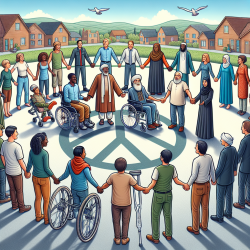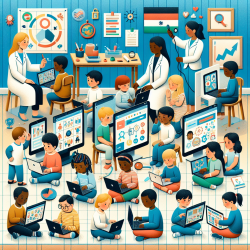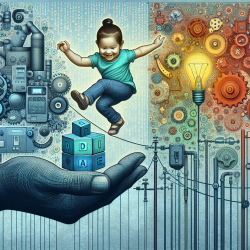Introduction
In the realm of special education and therapy services, practitioners are constantly seeking innovative strategies to enhance their skills and improve outcomes for students with disabilities. The research article "Community Based Rehabilitation: A Strategy for Peace-Building" offers valuable insights into how community-based rehabilitation (CBR) can serve as a powerful tool for peace-building in post-conflict settings. This blog explores the key takeaways from the research and encourages practitioners to implement these findings in their work or delve deeper into further research.
Understanding Community-Based Rehabilitation
Community-Based Rehabilitation (CBR) is an approach that emphasizes the involvement and empowerment of individuals with disabilities, their families, and communities. It aims to provide rehabilitation services at the community level, making them more accessible and inclusive. The World Health Organization defines CBR as an approach that utilizes and builds on existing resources within the community to support individuals with disabilities.
CBR as a Peace-Building Strategy
The research highlights the potential of CBR as a peace-building strategy, particularly in post-conflict settings. By focusing on the rehabilitation and integration of individuals with disabilities, CBR can address social and economic disparities that often contribute to conflict. The approach fosters collaboration among diverse groups, promoting understanding and cooperation.
- Promotion of Positive Attitudes: CBR programs work to de-stigmatize disability and promote positive role models, helping to integrate individuals with disabilities into society.
- Empowerment and Integration: By empowering individuals with disabilities, CBR facilitates their integration into society, fostering social cohesion and reducing tensions.
- Knowledge and Skills Transfer: CBR emphasizes the transfer of knowledge and skills to individuals with disabilities and their families, promoting self-help and independence.
Benefits of Implementing CBR
Practitioners in the field of special education and therapy services can benefit significantly from implementing CBR strategies. These benefits include:
- Enhanced Community Engagement: CBR fosters community involvement, creating a supportive network for individuals with disabilities.
- Improved Access to Services: By providing services at the community level, CBR reduces barriers to access, ensuring that individuals receive the support they need.
- Promotion of Social Equity: CBR addresses social inequities, promoting a more inclusive and equitable society.
Encouraging Further Research
While the research provides valuable insights into the benefits of CBR, it also highlights the need for further exploration and research. Practitioners are encouraged to delve deeper into the topic, exploring how CBR can be tailored to specific contexts and populations. By engaging in further research, practitioners can contribute to the development of more effective and sustainable CBR programs.
Conclusion
Community-Based Rehabilitation offers a promising pathway for peace-building and social integration in post-conflict settings. By implementing CBR strategies, practitioners can enhance their skills and contribute to creating more inclusive and equitable communities. To read the original research paper, please follow this link: Community based rehabilitation: a strategy for peace-building.










